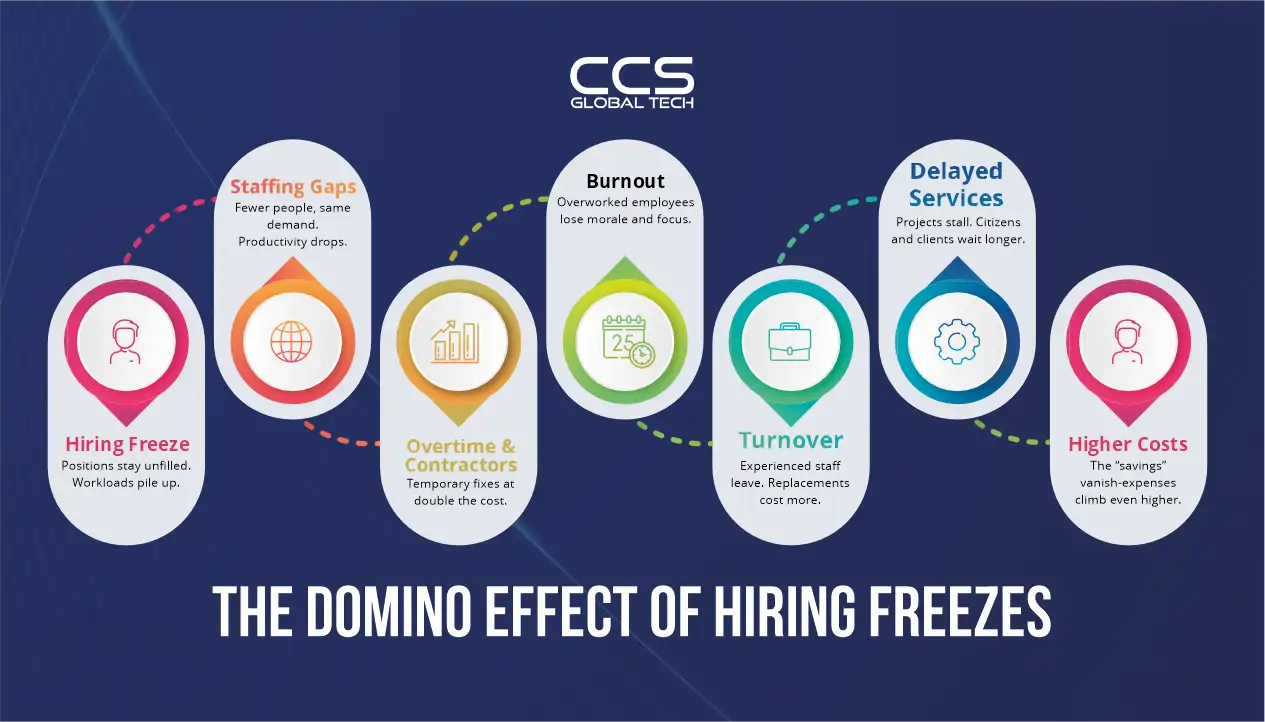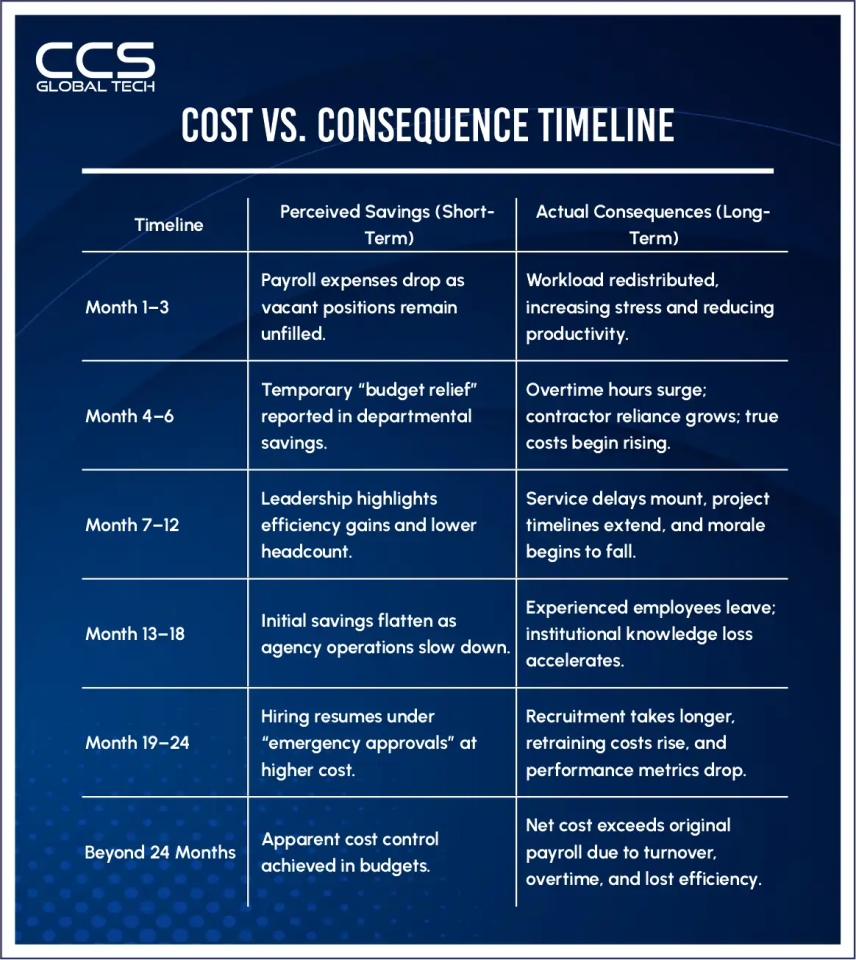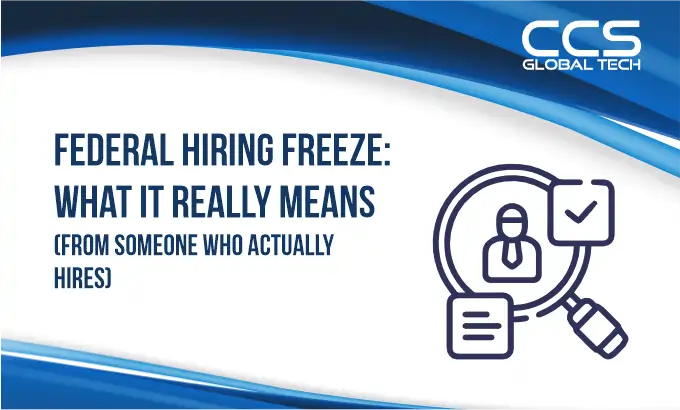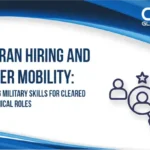A third-year law student woke up January 22, 2025, ready to start his dream job.
He’d earned a spot in a prestigious federal honors program- one of the most competitive paths for young attorneys in America. Years of late nights, interviews, and hard work had paid off.
That morning, he started onboarding. By afternoon, everything would be official. Then at 2:47 PM, his phone buzzed.
“Offer Rescission – Hiring Freeze.”
His job with a major federal law enforcement agency was gone. Years of work, erased. No explanation. No backup plan. No timeline for if he’d ever get it back.
“I was distraught,” he said. He wasn’t alone.
The Morning Everything Changed
At noon on January 20, 2025, every vacant federal civilian position was frozen. No new hires. No filling empty roles. No exceptions for nearly 2.4 million civilian federal employees across every agency, from healthcare to cybersecurity to emergency response.
At one major law school, about 20 students reported losing summer internships or postgraduate job offers at federal agencies. Students who’d signed offer letters. Made plans. Turned down other opportunities.
All gone in a single email.
At CCS Global Tech, we’ve spent over two decades helping federal agencies build their workforce. We’ve seen hiring slowdowns before. Budget squeezes. Reorganizations. Temporary holds.
This is different. And what’s happening behind the scenes is far worse than what’s making headlines.
What the News Isn't Telling You?
The story you’re hearing is about efficiency. Reducing bureaucracy. Trimming the fat. Making government leaner.
Here’s what we’re actually seeing on the ground:
We were on a call last month with a cybersecurity director at a major federal agency. They’d lost three senior analysts to private sector jobs in January, positions that paid 40% more for less stressful work. Those roles are now empty. The freeze means they can’t be filled.
“We’re tracking a serious threat to critical infrastructure,” he told us, his voice strained. “We used to have eight people on this. Now we have five, and they’re working 60-hour weeks. How long before we miss something? Before someone burns out and quits, making it worse?”
This isn’t theoretical. The administration reported cutting the federal workforce by 23,000 employees by March 31, just nine weeks after the freeze began. That’s not natural turnover, that’s hemorrhaging.
And here’s the part nobody’s calculating: when positions stay empty, the work doesn’t disappear.
The Hidden Cost: When Savings Become Spending
A hiring freeze sounds smart. Cut salaries, reduce headcount, save money. Simple.
Except it’s not. A Veterans Affairs hospital we work with got approval to hire nurses, one of the few exemptions. Patients waited months for appointments. They had the budget, the approval, qualified candidates ready.
They couldn’t hire them. HR systems were locked down by staffing limits. So what happened? They paid existing nurses overtime at time-and-a-half. They brought in contract nurses through agencies at nearly double the cost, with none of the long-term value.
A job that costs $85,000 yearly now costs $160,000 in overtime and contractors. Veterans still wait.
The Government Accountability Office studied this before. Their finding? Hiring freezes rarely save money. Instead: overtime costs, project delays, operational problems that cost more than the empty positions.
This is happening everywhere now. Agencies lose experienced staff, overwork survivors, and pay more for contractors, while claiming savings from empty desks.

The Story Nobody's Writing: America's Crumbling Defense
That cybersecurity director isn’t alone. Federal cybersecurity jobs sit empty after nine months of hiring freeze, now extended through October 15. Meanwhile, ransomware attacks keep rising. Foreign threats keep growing. The dangers don’t freeze.
One emergency manager told us: “We’re the fire department, but we can’t hire firefighters. When the next hurricane hits, we’ll respond with 30% fewer people. And everyone will wonder why we were slow.”
This isn’t red tape. These jobs protect American lives.
The freeze supposedly exempts immigration, national security, and public safety roles. In reality, the approval process is so slow that even exempt positions stay empty for months.
One immigration agency has tried hiring 15 approved positions since February. Still waiting. Every empty day, their mission suffers.
The Talent Pipeline Is Breaking
That law student found work as a research assistant. But his story reveals a bigger crisis.
The government’s top entry programs exist for a reason. They pull talented graduates who could earn double at private firms but choose public service instead. They believe in the mission.
Now they’re learning: the government isn’t reliable. Your offer vanishes without warning. Your plans disappear overnight. Your sacrifice doesn’t matter.
This isn’t about one student. It’s about every talented young person now reconsidering federal work. The actuaries, environmental scientists, data analysts who could help improve government.
The government already can’t match private sector pay. Now add: “Your job offer might vanish at any moment.”
Who chooses that?
What Happens Next: The Part That Keeps Our Team Up at Night
Even when the freeze ends, only one out of every four open jobs can be filled. Your team running at 75% forever. Work piles up. Services get cut. People burn out.
Here’s the real problem: By fall, agencies will have gone nine months without hiring. Nine months of experienced people leaving. Nine months without training new staff. Nine months of talent going to companies instead. Nine months of skeleton crews doing double duty.
You can’t bounce back from that fast. The damage adds up.
Many agencies have workers averaging close to 60 years old. Retirements are coming—we knew this before the freeze. When they leave, who takes over? Who learns how things work? Nobody. Because we locked them out.
The Real Cost: What We're Actually Paying For
Let’s be clear about what this hiring freeze is actually achieving:
It’s not saving money. Overtime and contractor costs are exceeding salary savings across multiple agencies. The GAO warned this would happen. It’s happening.
It’s not improving efficiency. Understaffed agencies are slower, not faster. Backlogs are growing. Service quality is declining. Processing times are lengthening.
It’s not reducing bureaucracy. It’s creating more–approval processes for exempt positions are more bureaucratic than normal hiring ever was.
What it is doing:
- Driving experienced professionals to the private sector.
- Destroying the talent pipeline for future federal leadership.
- Creating operational risks in national security and public safety.
- Burning out the dedicated public servants who remain.
- Breaking public trust in government’s ability to function.
And here’s what frustrates our team most: the people making these decisions have access to the same data we do. They know hiring freezes don’t work the way they’re supposed to.
But the politics of “reducing government” play well, even when the reality is “breaking government.”

Where We Go From Here?
If you’re a federal HR leader, a hiring manager, or a business leader working with government agencies, you already know what we’re describing is true. You’re living it.
If you’re a professional whose career was derailed by this freeze, you know the personal cost.
If you’re a taxpayer, you deserve to know that “savings” from this freeze are likely costing you more in the long run.
The freeze will eventually end. Hiring will eventually resume. But the damage being done right now, to morale, to institutional knowledge, to the talent pipeline, to operational capacity, won’t heal quickly.
Our Recommendations: Building Strength Amid Uncertainty
As a trusted workforce solutions partner to federal agencies, CCS Global Tech helps leaders stay resilient and ready. Here’s where to focus next:
1. Document What Matters
When hiring restrictions lift, speed will be everything. Agencies that have clear records of critical roles, delays, and impact will recover faster and make smarter staffing decisions.
2. Support the People Keeping the Lights On
Your current team is carrying the load. Recognition, training, and support aren’t perks, they’re essential to retention and long-term performance.
3. Get Ahead of the Talent RaceOn
When hiring resumes, competition for skilled professionals will be fierce. Clarify your value proposition now so candidates understand why federal service is worth choosing.
4. Strengthen Key Partnerships
Rebuilding the talent pipeline will depend on collaboration. Stay connected with workforce partners, universities, and professional networks to keep your recruiting channels strong.
5. Build Workforce Agility
Flexibility drives resilience. Cross-train, promote internal mobility, and plan for succession to keep operations running smoothly through future disruptions.
The Skills Investment That Matters Now
One clear lesson from this freeze: agencies that invested in workforce development before the crisis are handling it better. When you can’t hire from outside, internal capability becomes everything.
This is why our partnership with CCS Learning Academy has never been more relevant. Programs like the Data Analytics Bootcamp equip federal professionals with critical capabilities in data literacy, analytical thinking, and strategic decision-making, exactly the skills needed to do more with less during workforce constraints.
Skills development isn’t just about individual career growth. It’s about organizational strength. Agencies that support continuous learning and workforce flexibility are better positioned to maintain mission-critical operations during disruptions like this freeze.
Moving Forward Together
The federal hiring freeze presents unprecedented challenges, but it also reveals opportunities for better workforce strategy. At CCS Global Tech, we remain committed to partnering with federal agencies and business leaders to deliver practical solutions, strategic guidance, and real workforce support.
The federal hiring freeze presents unprecedented challenges, but it also reveals opportunities for better workforce strategy. At CCS Global Tech, we remain committed to partnering with federal agencies and business leaders to deliver practical solutions, strategic guidance, and real workforce support.
The freeze has paused hiring, but it doesn’t have to pause progress.
Together, we can maintain mission success through smart talent strategies, balancing the realities of today with the promise of tomorrow. The work continues. The mission matters. And the people who make it happen deserve support, recognition, and investment in their future capabilities.
That’s what partnership means in times of uncertainty.
Need strategic workforce guidance during the freeze? Our federal workforce solutions team understands the unique challenges you’re facing.
Q1. How does the federal hiring freeze actually affect agency operations?
A: Veterans often bring expertise in cybersecurity, IT systems, engineering, and operations management. Their mission discipline, leadership under pressure, and experience handling sensitive information directly align with cleared technical positions in defense, government, and private sector organizations.
Q2. Why do hiring freezes fail to deliver real budget savings?
A: While salary expenses drop temporarily, agencies end up spending more on contractors, overtime pay, and delays. GAO studies show that most hiring freezes cost more over time than they save due to inefficiencies and turnover.
Q3. What are the hidden costs of a federal hiring freeze?
A: Hidden costs include staff burnout, talent loss, delayed projects, and increased reliance on external vendors. These ripple effects often weaken long-term mission capability and public trust in government performance.
Q4. How does a hiring freeze impact federal employee morale and retention?
A: Morale drops sharply during hiring freezes as workloads grow and career advancement stalls. Skilled employees often leave for the private sector, creating a leadership and institutional knowledge gap that’s difficult to rebuild.
Q5. What alternatives to hiring freezes can help control federal workforce costs?
A: Agencies can adopt flexible staffing models, cross-training programs, and strategic partnerships that align workforce capacity with mission demand—without halting recruitment altogether.
Q6. How does a hiring freeze affect national security and critical services?
A: When critical positions remain vacant, functions like defense logistics, cybersecurity, and healthcare administration face disruptions. The result is slower response times and increased operational risk in vital programs.
Q7. What lessons has the GAO or OPM learned from past hiring freezes?
A: Historical reviews by the GAO conclude that federal hiring freezes rarely achieve intended fiscal goals. They recommend targeted workforce planning instead—focusing on efficiency, not blanket freezes.
Q8. How can agencies maintain performance during a hiring freeze?
A: Agencies that succeed use automation, temporary surge staffing, and public-private partnerships to fill capability gaps. They emphasize process improvement over headcount control.
Q9. What long-term damage can repeated hiring freezes cause?
A: Repeated freezes erode the talent pipeline, delay innovation, and create dependency on external contractors. Over time, they weaken institutional resilience and make recovery more expensive.
Q10. How can data-driven workforce planning prevent future hiring crises?
A: Data-driven workforce planning enables organizations to forecast talent needs accurately, aligning hiring with future business demands. This proactive approach helps prevent skill gaps and reduces the risk of last-minute hiring crises.






